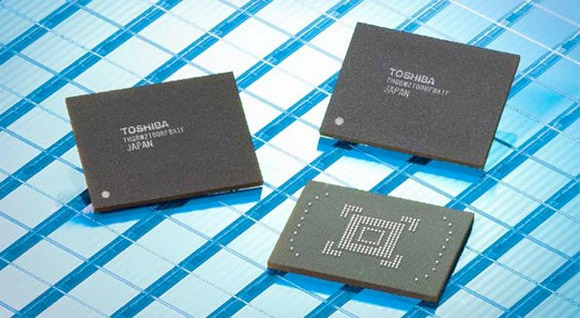Toshiba's Prototype Memory Gets Smart, Conserves Power On Its Own Accord
In the race for "smaller, faster, better," memory chip makers probably have it the toughest. They're already dealing with immensely small objects, but as software evolves, we're sure in need of lots more of the stuff to keep our app addiction on course. One of the troubles, however, is power consumption. Most consumers probably don't realize just how much energy is sucked out of their laptop, tablet and phone by nature of RAM being in there, and that's one of the things that Toshiba is looking to address with its latest introduction.
The company this week announced the development of an innovative low-power technology for embedded SRAM for application in smart phones and other mobile products. The new technology reduces active and standby power in temperatures ranging from room temperature (RT) to high temperature (HT) by using a bit line power calculator (BLPC) and a digitally controllable retention circuit (DCRC). That's a lot of technobabble, but it boils down to this: a prototype has been confirmed to reduce active and standby power consumption at 25°C by 27% and 85%, respectively. In other words, if this RAM hits production, your next-gen device could last a lot longer... even with the same size battery.

Toshiba's new technology applies a BLPC and DCRC. The BLPC predicts power consumption of bit lines by using replicated bit lines to monitor the frequency of the ring oscillator. It minimizes the active power of the SRAM in certain conditions by monitoring the current consumption of the SRAM rest circuits. The DCRC greatly decreases standby power in the retention circuit by periodically activating itself to update the size of the buffer of the retention driver. Who would have ever believed that RAM would grow to be smart enough to conserve power? We think we feel a tear coming...
The company this week announced the development of an innovative low-power technology for embedded SRAM for application in smart phones and other mobile products. The new technology reduces active and standby power in temperatures ranging from room temperature (RT) to high temperature (HT) by using a bit line power calculator (BLPC) and a digitally controllable retention circuit (DCRC). That's a lot of technobabble, but it boils down to this: a prototype has been confirmed to reduce active and standby power consumption at 25°C by 27% and 85%, respectively. In other words, if this RAM hits production, your next-gen device could last a lot longer... even with the same size battery.

Toshiba's new technology applies a BLPC and DCRC. The BLPC predicts power consumption of bit lines by using replicated bit lines to monitor the frequency of the ring oscillator. It minimizes the active power of the SRAM in certain conditions by monitoring the current consumption of the SRAM rest circuits. The DCRC greatly decreases standby power in the retention circuit by periodically activating itself to update the size of the buffer of the retention driver. Who would have ever believed that RAM would grow to be smart enough to conserve power? We think we feel a tear coming...

